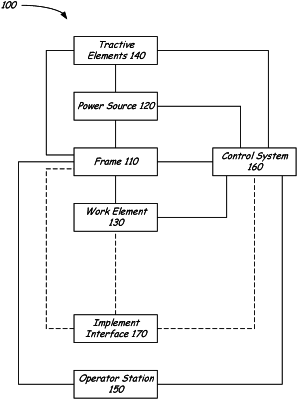| CPC E02F 9/2025 (2013.01) [E02F 3/3604 (2013.01); E02F 3/364 (2013.01); E02F 3/3627 (2013.01); E02F 3/3668 (2013.01); E02F 3/3672 (2013.01); E02F 9/264 (2013.01); E02F 9/267 (2013.01); E02F 3/3414 (2013.01)] | 12 Claims |

|
1. A method of sensing a position of an implement relative to an implement carrier of a power machine to which the implement can be attached, the implement carrier having a first plate coupled to a first arm of a lift arm structure and a second plate coupled to a second arm of the lift arm structure, the first and second plates each having a front face, a top surface angled with respect to the front face, and a bottom surface angled with respect to the front face, the method comprising:
determining whether a first sensor of an implement sensing system, located at a first position at the top surface of the first plate of the implement carrier, angled with respect to the front face of the first plate, during a process of beginning engagement with the implement, detects the implement, the first position on the implement carrier being separate from one or more pin engagement positions;
providing an indication to a control system of whether the first sensor detects the implement;
determining whether a second sensor of the implement sensing system, located at a second position at the bottom surface of the second plate of the implement carrier, angled with respect to the front face of the second plate, during the process of beginning engagement with the implement, detects the implement, the second position on the implement carrier being separate from the one or more pin engagement positions;
providing an indication to the control system of whether the second sensor detects the implement;
determining, if the second sensor detected the implement, whether a locking mechanism sensor of the implement sensing system detects a locking mechanism in an activated position; and
providing an indication to the control system of whether the locking mechanism is activated.
|